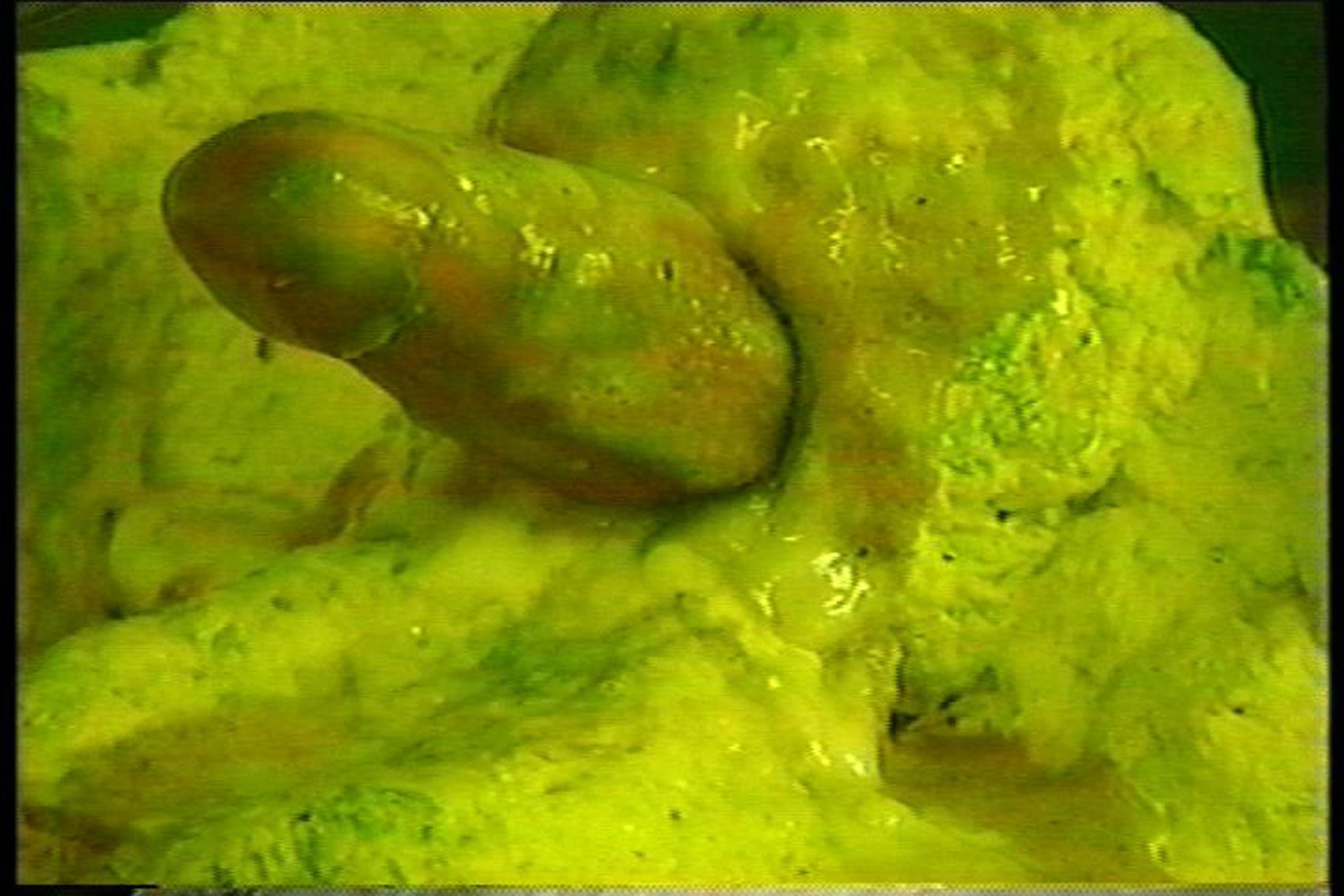
Suitable Video Vol. 1: Curator’s Note
by Scott Wolniak
This program loosely organizes work by a number of artists who showed at Suitable Gallery, a DIY exhibition space located in Chicago’s Humboldt Park neighborhood, during its 5 year run between 1999 and 2004. It speaks more of a community of artists than of a curatorial agenda. The process of selection and compilation began as a straightforward effort to survey all the video work shown at Suitable. Substitutions and omissions occurred in response to logistic and aesthetic concerns. The resulting program ultimately sought balance and watchability over purity or completeness.
The content is disparate and varied. There is no thematic or conceptual agenda, although several arise retrospectively which may reflect the tastes involved in Suitable’s original gallery programming. Subject matter found in these pieces include humor, failure, the abject and degenerate, the performative, roll playing, the body, art history, art spaces, art materials, counter-culture, process, time, death and love, to name a few. There is a tangible sense of utility in much of the work- they do not seem fussed over, they communicate directly.
A good example of this directness is found in Kirsten Stoltmann’s “I Spill my Guts Everyday for Nothing”, 2002. The trope of Hollywood special effect is combined with conventions of early Feminist performance video to darkly illustrate emotional vulnerability. The fact that Stoltmann is spilling ‘real’ guts, procured from a butcher, out of her duct-taped prosthetic tummy is almost too disturbing. The look of it is nasty, for sure, but we are only given a quick glimpse, as it slides out of the ruptured skin and hits the floor with a splat. It is in the extended view we have of her face that the true horror/ humor is revealed. As she confronts the camera, pallid and pasty, there is tension between her facial-expression and the resonant splat from guts hitting that black-and-white tile floor.
The hand-made and the gross come together again in videos by Paul Nudd and Charles Irvin. Nudd is famous for brewing up pools of slime and mucous from art supplies and food. They are playful, like a child blowing milk bubbles, but the effect of viscous ooze quickly turns real, abject, snotty and stomach turning. Nudd managed even to disturb himself with his piece “Worm Death”, 2000, in which an anonymous phallic drone protrudes from a wet mustardy crevasse, and loudly oinks.
Irvin’s 1999 video “O’Malley’s Head” is a long trance-inducing piece about a baby and a head. Documentation of a cute, cooing baby playing with a ridiculous wide-eyed, decapitated head (presumably O’Malley’s) is edited to over-the-top Gerber-baby squawk, creating an experience that is kitsch and funny, but mostly just mental.
“Macho-Shogun”, 2000, by Reed Anderson and Daniel Davidson’s is a juvenile B-movie fantasy brought to life with the methods and materials of an Ab-Ex sculptor. An entire city constructed from cardboard and paint is destroyed in battle between two robot-creatures (also made of cardboard and paint). In an especially dramatic slow-motion fight sequence, the hairy legs and wrestling-suit of a performer are sited through the sloppy seams of one of the cardboard robot suits. This humorous moment reveals the artists behind the action, contextualizing the performers and the scale of the set, and allowing us to remember that through all of the smoke and fire and smashing, this is a construct of ludic delight.
Another moment of pure play comes in Ben Stone’s “High Five”, 1999. This piece takes the form of a home movie, a document of low-stakes backyard competition. Three friends run a small course then high-five each other, with a cheesy little digital effect for flourish. Everyone cheers and the piece is over in 40 seconds. It is so sweet; it makes me want a juice box.
An interesting sub-narrative for this program can be found in the media itself. These works were made during a transitional time for video, as the standard was shifting from VHS to miniDV circa Hi8 and Digital8. There was no home DVD authoring, and certainly no projectors. It is funny to think that most of the video shown back then was displayed on crummy little monitors with built-in VHS players. Tapes would be prepped for auto-rewind, and viewers would experience art through awkward apparatus.
Some of works literally embody these historical phases in their media identities, such as “Shooter” by Marc Schwartzberg, for which the conversion sequence reads Hi-8 to VHS to miniDV to DVD. This piece certainly cannot be harmed by quality loss, as the content is already so far outside of what might be considered ‘good’. Acts of half-baked posturing, sidewalk intimidation and spitting are captured on a shaky hand-held camera then set to the music of Motorhead. The resulting video is like of a C-grade A/V project made by a high school burnout.
Other works reflect format conversions visually. Degraded resolution can reveal a history of over-dubs and bad signals. Sarah Conaway’s piece “Two Dogs and a Ball”- a cover of William Wegman’s piece of the same title from the late 60’s, gains from its degree of quality loss. In this case it is brought it closer to the chopped and fuzzy original. This lack of fidelity is kind of comforting- a magnetic patina to antique vintage moving images, evoking authenticity and contrasting today’s pixel perfect HD.
The newest work in the program is “Inevitable (NTSC Version)” by Siebren Versteeg, from 2008, which functions as a departure. Produced four years after Suitable closed, this piece was included to refer back to Versteeg’s 2001 solo project in the gallery but also to look ahead, thinking about the possibility for future manifestations of Suitable Video. This piece speaks poetically of the kind forward and backward technological trajectory that this program engages, traversing between old-school manual work with hands and tools, to low-res pixels and, eventually, high-definition multiplicity.